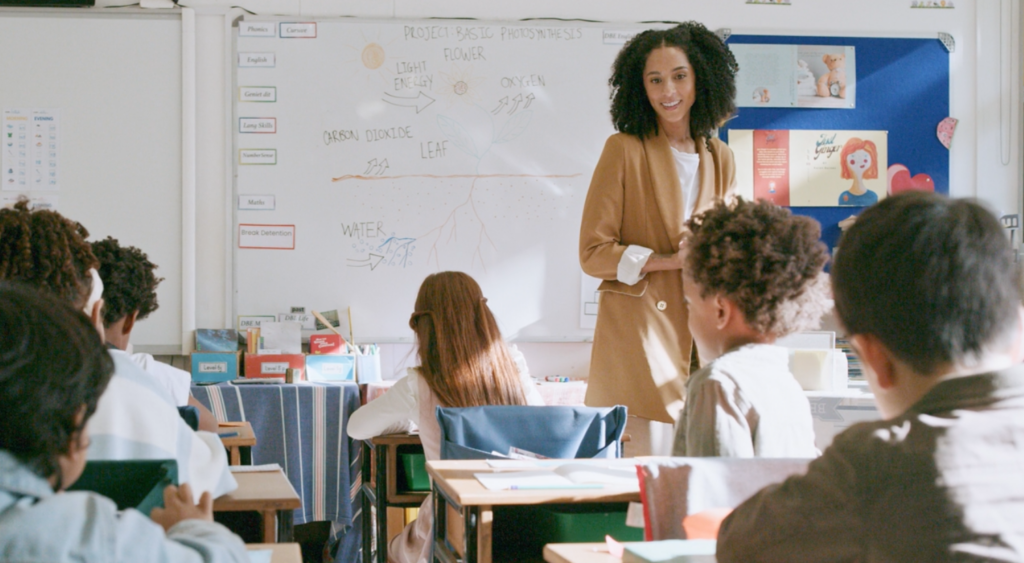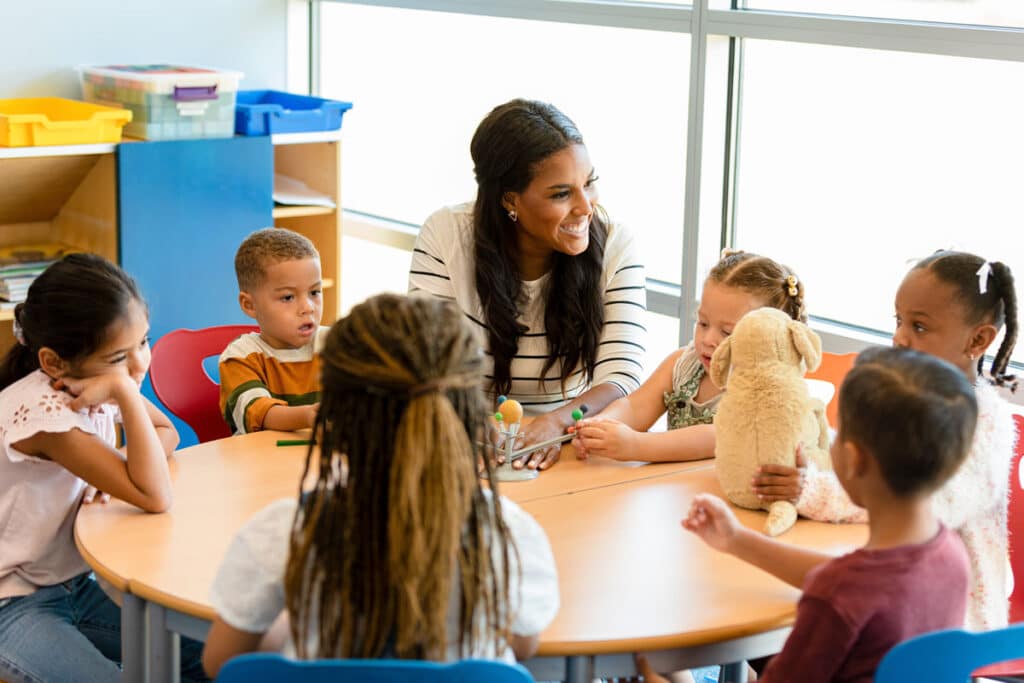What is a school system pediatric physical therapist.

A school system pediatric physical therapist supports students with physical challenges to successfully navigate their school environment and fully participate in their education.
Essential school system pediatric physical therapist duties.
School pediatric physical therapists develop and implement various targeted approaches to help students improve physical function and engage in classroom activities. From navigating classroom transitions to improving their physical environment, supporting a child’s access to learning and participation with their peers is fundamental.
Key responsibilities of a school system pediatric physical therapist:
- Assess and evaluate student needs and abilities.
- Create and apply individualized strategies to help students increase their range of motion, restore and/or improve physical function, or manage or reduce pain.
- Develop solutions by altering students’ physical environment (i.e., making playground changes, using adaptive classroom seating).
- Help students understand and use assistive devices, such as wheelchairs, hearing aids, and other daily living devices.
- Collaborate with school therapy teams to ensure consistent support.
- Train educators to address general classroom needs.
Which students do school pediatric physical therapists support?
School pediatric physical therapists work with students with different physical challenges. Students with disabilities or functional limitations that prevent them from engaging fully in school can benefit from physical therapy services.
For example, if a child with a spinal cord injury has trouble moving around the classroom, a pediatric physical therapist would work with them to develop the skills and tools to navigate their environment safely and independently. This could include adapting the classroom layout, using mobility aids, and teaching techniques to manage daily routines.
By addressing physical barriers, therapists empower independence in managing everyday classroom activities. Students can safely engage in their school environment and participate in activities in ways that work best for them.
One-on-one or small group support.
Much of a school pediatric physical therapist’s role includes working with students independently or in small groups. When working one-on-one with students, therapists observe their situation to develop and implement tailored strategies.
School pediatric physical therapists typically work with children in pull-out and push-in sessions. With pull-out sessions, the therapist works with the child outside the classroom in a separate area, such as the gym or a special education room.
These sessions can involve working with a student to improve physical functions. Students may also practice using assistive devices, like communication aids or mobility devices. Interventions may focus on enhancing, strengthening, or advancing one or more of the following physical functions:
- Coordination
- Endurance
- Posture
- Stability
- Mobility
- Gross and fine motor control
- Strength
- Balance
During push-in sessions, therapists work to ensure that a child’s functional or physical limitations don’t affect their ability to participate in class. Therapists may use positioning techniques or assistive devices to help students move around and participate in daily classroom activities.
Working as part of an interdisciplinary team.
As a vital member of school-based teams, a school system pediatric physical therapist collaborates with a school therapy team to ensure children have equal access to educational services. They are part of an individualized education plan (IEP) team that helps students transition through a spectrum of services based on their evolving needs and capabilities.
By working closely with a school therapy team, physical therapists develop coordinated treatment plans, share student progress, and ensure consistent support. This collaboration creates empowerment, promoting greater confidence while preventing dependency. Here are some school therapy team members a physical therapist typically works with:
- A student’s teacher
- A student’s parents or guardians
- The school’s special education coordinator
- Social workers
- Occupational therapists
- Speech-language pathologists
- School psychologists
Working at the classroom level.
School pediatric physical therapists also work with teachers and support staff. They may provide training to help teachers and staff understand how to address general student needs in the classroom.
For example, a physical therapist might train a teacher on how to set up a supportive classroom for a child with mobility needs. Therapists help educators better support students with functional limitations or physical disabilities, ensuring they can fully and safely participate alongside their peers.
Pediatric Therapeutic Services: We’re here to help you make a difference.
More and more school districts are seeing the benefit of using a company to hire their school-based therapists. At Pediatric Therapeutic Services, we work with occupational therapists, speech-language pathologists, physical therapists, psychologists, mental health professionals, and other clinicians to help you find the right school-based placements.
If you’re interested in becoming a school-based occupational therapist, learn more about joining our team.
View Related: Applying for jobs Article Job searching
You might like
Education Hiring Event – St. John the Baptist Parish Public District
1 minute read
Nov. 13 | St. John the Baptist Parish, LA
Education Hiring Event – West Baton Rouge Parish
< 1 minute read
Nov. 19 | West Baton Rouge Parish, LA
Education Hiring Event – Aurora Public Schools
< 1 minute read
Nov. 11 | Aurora, Colorado
Education Hiring Event – St. John the Baptist Parish Public District
1 minute read
Nov. 13 | St. John the Baptist Parish, LA
Education Hiring Event – West Baton Rouge Parish
< 1 minute read
Nov. 19 | West Baton Rouge Parish, LA
Education Hiring Event – Aurora Public Schools
< 1 minute read
Nov. 11 | Aurora, Colorado
Find your next job
Discover thousands of temporary, full-time, and remote jobs for beginning and experienced job seekers.



